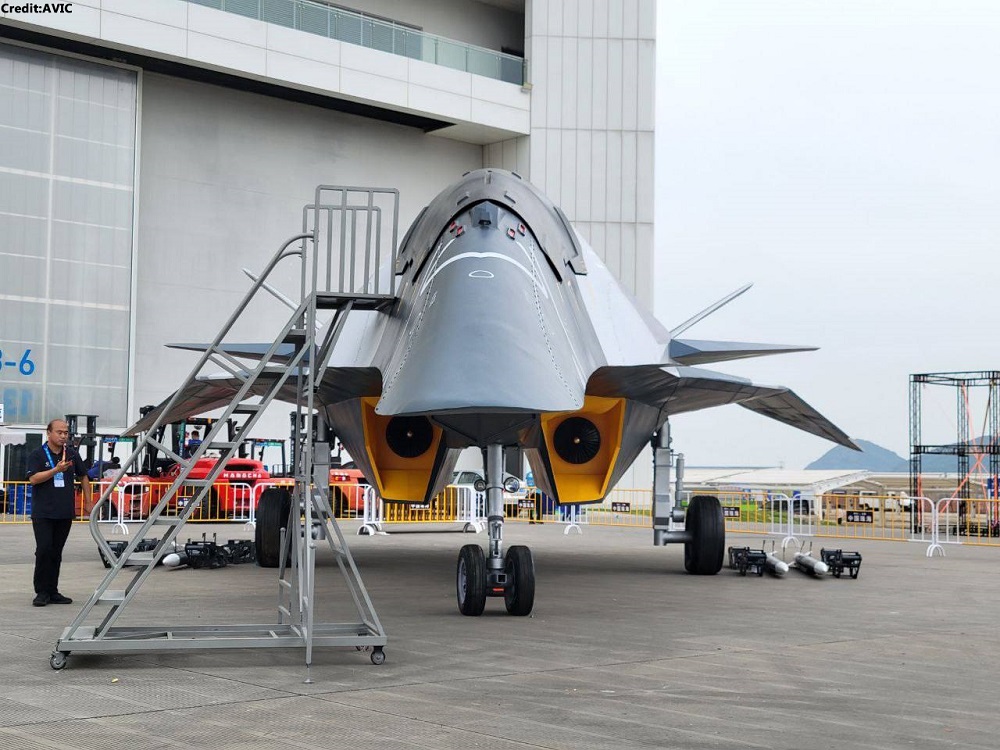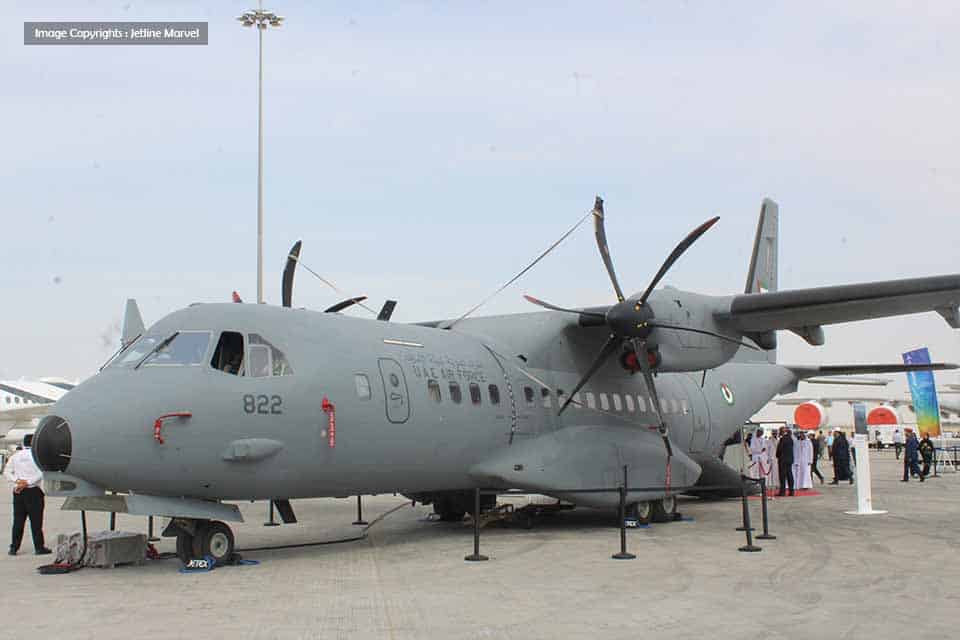Defence
China Takes the Lead in Sixth-Generation Fighters with White Emperor B

China has taken the lead in the race to develop a sixth-generation fighter jet, recently revealing its new “White Emperor B” variant, an advanced prototype demonstrating China’s vision for next-generation air superiority.
While the United States has announced its NGAD (Next Generation Air Dominance) initiative and the European Union is also in development, China appears to be moving quickly, reportedly already testing components and assessing design viability.
Nicknamed the “White Emperor B,” this fighter jet is set to feature highly advanced capabilities, making it potentially more lethal than any current fighter. With a single-seat, tailless design, its shape is inspired by the nose and engine inlet configurations of the Su-30. The aircraft has a sleek, duck-shaped fuselage, two engines housed beneath the main body, and an exhaust system crafted to enhance stealth. The tailless structure is specifically designed for high-speed maneuverability, maximizing both stealth and control.
The White Emperor B is also expected to integrate cutting-edge weaponry, including air-to-air missiles, laser-guided missiles, and other state-of-the-art technologies, increasing its adaptability across various combat scenarios. This fighter aims to set new standards in human-machine collaboration, simplifying maintenance and significantly boosting combat efficiency and sortie rates — essential attributes for modern warfare, where rapid response and sustainability are crucial.
Experts suggest that the White Emperor B could utilize artificial intelligence (AI) to enhance pilot decision-making and optimize mission performance. It may also include advanced sensor fusion, enabling it to process real-time information and coordinate seamlessly with unmanned aerial systems (UAS), creating a cohesive combat network that allows both piloted and autonomous aircraft to operate together.
Aligned with global trends in sixth-generation fighter development, China’s White Emperor B program underscores its commitment to keeping pace with, or even surpassing, international defense initiatives like the U.S. NGAD and Europe’s Future Combat Air System (FCAS). Though specific technical details remain confidential, this conceptual model reflects China’s strategy to meet both current and future combat needs by pushing the boundaries of stealth, AI integration, and payload versatility. The White Emperor B is a clear statement of China’s ambition to secure a leading role in cutting-edge aviation technology, ensuring a formidable presence in future conflicts.

Defence
India’s C-295 to Gain Advanced Weapons for Maritime Surveillance

In a major step towards enhancing its maritime defense capabilities, India has unveiled a weaponized version of the Airbus C-295, designed to significantly bolster the Indian Navy and Coast Guard’s ability to patrol and secure its vast coastline.
Recently inaugurated at the Tata Aircraft Complex in Vadodara, this modified C-295 platform is poised to play a key role in both maritime surveillance and defense.
The new aircraft, tailored for India’s specific needs, will be equipped with advanced weapon systems, including anti-ship missiles, torpedoes, and sonobuoys, making it a formidable asset in the country’s maritime patrol and anti-submarine warfare missions.
The modified C-295 will be deployed in two key roles: as the Multi-Mission Maritime Aircraft (MMMA) for the Indian Coast Guard and the Medium Range Maritime Reconnaissance (MRMR) aircraft for the Indian Navy. These specialized platforms are designed to enhance India’s ability to monitor and defend its extensive maritime borders, offering greater flexibility and precision in operations.
A key feature of the weaponized C-295 is its ability to carry advanced weapon systems, making it a versatile platform for both offensive and defensive operations. The aircraft will be equipped with multiple hard points, allowing it to deploy various weapons systems to effectively counter maritime threats.
One of the most significant upgrades is the integration of anti-ship missile capabilities. The modified C-295 will be able to carry DRDO’s NASM-SR (Short-Range) and NASM-MR (Medium-Range) anti-ship missiles, enabling the aircraft to carry out precision strikes against enemy vessels.
Torpedo-Launching and Anti-Submarine Warfare Capabilities
In addition to its missile capabilities, the weaponized C-295 will be equipped with the ability to deploy the Torpedo Advanced Light (TAL), developed by the DRDO. This torpedo system is designed to neutralize underwater threats, particularly enemy submarines, enhancing the platform’s anti-submarine warfare (ASW) capabilities.
With its torpedo-launching capability, the C-295 will be able to respond effectively to the growing threat of submarines in India’s waters.
Moreover, the C-295 will be fitted with air-launched sonobuoys, an essential tool in maritime surveillance and submarine detection. Sonobuoys play a crucial role in locating and tracking submarines, making them an invaluable asset for anti-submarine warfare missions.
The integration of sonobuoys will further enhance the C-295’s effectiveness in maritime patrol operations, ensuring that the platform is capable of detecting and countering both surface and underwater threats.
A Complementary Addition to India’s Maritime Fleet
The introduction of the MMMA and MRMR variants of the C-295 will significantly enhance India’s maritime patrol capabilities, complementing existing platforms such as the Boeing P-8I, which is primarily used for long-range maritime reconnaissance.
While the P-8I offers excellent long-range capabilities, the C-295’s medium-range features provide a cost-effective and versatile solution for missions that require flexibility and endurance. This makes the C-295 an ideal platform for a range of maritime patrol tasks, from surveillance to strike missions.
With the integration of advanced weapon systems such as anti-ship missiles, torpedoes, and sonobuoys, the weaponized C-295 will dramatically enhance India’s maritime security capabilities.
-

 Aviation2 months ago
Aviation2 months agoBoeing confirms 797: A New Era for Mid-Size Aircraft
-

 Aviation2 months ago
Aviation2 months agoMicrosoft Flight Simulator Raises $3 Million to Bring Back the An-225 Mriya
-

 Aviation2 months ago
Aviation2 months agoLockheed and Tata Team Up to Build C-130J MRO Facility in India
-

 Tech2 months ago
Tech2 months agoChina Developing Jet to Travel Anywhere in Two Hours
-

 Airlines2 months ago
Airlines2 months agoQantas Engineers Stage Walkout Over Cost of Living Concerns
-

 Airlines2 months ago
Airlines2 months agoQatar Citizens Can Travel to the United States Without a Visa
-

 Aviation2 months ago
Aviation2 months agoBoeing Offers 25% Pay Increase & Promise to Build Next Plane in Seattle
-

 Aviation2 months ago
Aviation2 months agoQatar Airways bans these new Electronic Devices on plane









You must be logged in to post a comment Login